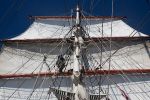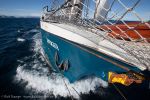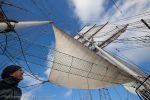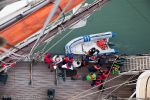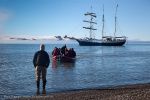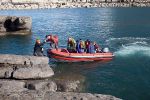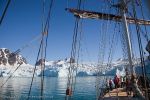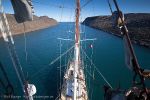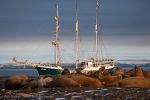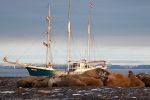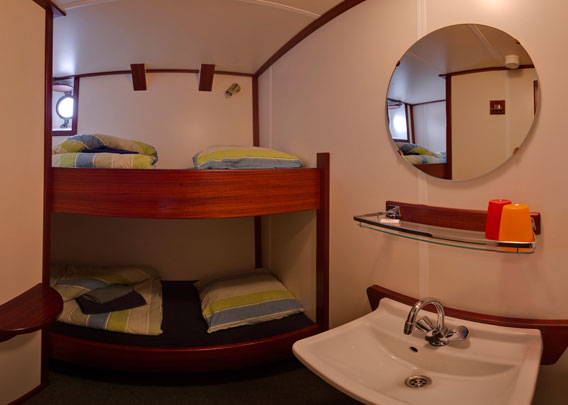-
current
recommendations- Liefdefjord
New page dedicated to one of Spitsbergen's most beautiful fjords. Background information and many photos.
- New Spitsbergen guidebook
The new edition of my Spitsbergen guidebook is out and available now!
- Liefdefjord
New page dedicated to one of Spitsbergen's most beautiful fjords. Background information and many photos.
Page Structure
-
Spitsbergen-News
- Select Month
- June 2025
- May 2025
- April 2025
- March 2025
- February 2025
- January 2025
- December 2024
- November 2024
- October 2024
- September 2024
- August 2024
- July 2024
- June 2024
- May 2024
- April 2024
- March 2024
- February 2024
- January 2024
- December 2023
- November 2023
- October 2023
- September 2023
- August 2023
- July 2023
- June 2023
- May 2023
- April 2023
- March 2023
- February 2023
- January 2023
- December 2022
- November 2022
- October 2022
- September 2022
- August 2022
- July 2022
- June 2022
- May 2022
- April 2022
- March 2022
- February 2022
- January 2022
- December 2021
- November 2021
- October 2021
- September 2021
- August 2021
- July 2021
- June 2021
- May 2021
- April 2021
- March 2021
- February 2021
- January 2021
- December 2020
- November 2020
- October 2020
- September 2020
- August 2020
- July 2020
- June 2020
- May 2020
- April 2020
- March 2020
- February 2020
- January 2020
- December 2019
- November 2019
- October 2019
- September 2019
- August 2019
- July 2019
- June 2019
- May 2019
- April 2019
- March 2019
- February 2019
- January 2019
- December 2018
- November 2018
- October 2018
- September 2018
- August 2018
- July 2018
- June 2018
- May 2018
- April 2018
- March 2018
- February 2018
- January 2018
- December 2017
- November 2017
- October 2017
- September 2017
- August 2017
- July 2017
- June 2017
- May 2017
- April 2017
- March 2017
- February 2017
- January 2017
- December 2016
- November 2016
- October 2016
- September 2016
- August 2016
- July 2016
- June 2016
- May 2016
- April 2016
- March 2016
- February 2016
- January 2016
- December 2015
- November 2015
- October 2015
- September 2015
- August 2015
- July 2015
- June 2015
- May 2015
- April 2015
- March 2015
- February 2015
- January 2015
- December 2014
- November 2014
- October 2014
- September 2014
- August 2014
- July 2014
- June 2014
- May 2014
- April 2014
- March 2014
- February 2014
- January 2014
- December 2013
- November 2013
- October 2013
- September 2013
- August 2013
- July 2013
- June 2013
- May 2013
- April 2013
- March 2013
- February 2013
- January 2013
- December 2012
- November 2012
- October 2012
- September 2012
- August 2012
- July 2012
- June 2012
- May 2012
- April 2012
- March 2012
- February 2012
- January 2012
- December 2011
- November 2011
- October 2011
- September 2011
- August 2011
- May 2011
- April 2011
- March 2011
- February 2011
- January 2011
- December 2010
- November 2010
- September 2010
- August 2010
- July 2010
- June 2010
- May 2010
- April 2010
- March 2010
- February 2010
- November 2009
- October 2009
- August 2009
- July 2009
- June 2009
- May 2009
- April 2009
- March 2009
- February 2009
- January 2009
- December 2008
- November 2008
- October 2008
- August 2008
- July 2008
- June 2008
- May 2008
- April 2008
- March 2008
- February 2008
- April 2000
- Select Month
-
weather information
-
Newsletter

| Guidebook: Spitsbergen-Svalbard |
The Antigua
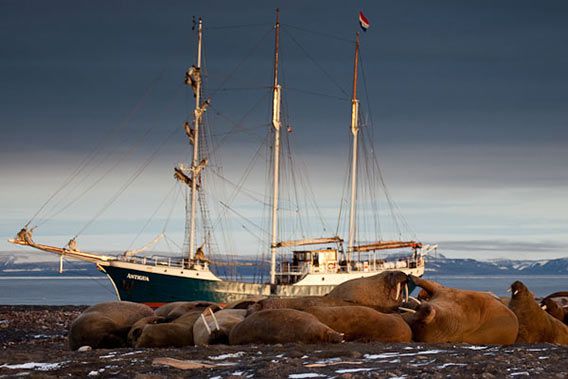
The Antigua
The three-mast sailing ship Antigua was built in 1957 in Thorne (UK) and sailed as a fishing vessel in her early years, until she was purchased in the early 1990s by Dutch tallship enthusiasts and re-fitted thoroughly as a barkentine for passenger traffic.
Since then, the Antigua has got 16 twin passenger cabins, each with individual toilet and shower and a small porthole (the two front cabins have the porthole actually in the bathroom). The Antigua is a regular sight in Spitsbergen’s fjords since 2009.
Occasionally, the crew will need your − the passengers’ − help during sailing maneouvres. Up to 32 passengers share these little duties, and as a result, you as individual will experience this as part of the adventure rather than a burden. Sailing experience is not necessary, as the crew will always be there to supervise..
Antigua at Moffen, at the north coast of Spitsbergen
Some details:
| Flagg | Dutch |
| Home port | Franeker near Harlingen (NL) |
| The nautical crew | 7 persons, mostly Dutch and Germans (Captain, navigators, deck/service crew). |
| Expedition Leader/Guide | I - Rolf Stange - will be Expedition Leader on my own departures. Additionally, there is an experienced, knowledgeable guide/lecturer. |
| Board language | The voyages organized by Rolf Stange and Geo-RG with SV Antigua are German speaking! All crew members speak English, most of them also Dutch and/or German. |
| Electricity | 220 V with European standard plug. |
| Length (complete) | 49.50 metres |
| Width | 7.13 metres |
| Draft | 3.10 metres |
| Maximum sail area | 750 m2 |
| Main engine | Cummins 400 PS |
| Speed | 5-7 knots, depending on currents & weather |
| Bow thruster | Yes |
| Certificate number | 9336ZZ |
| Passenger cabins | 16 twin cabins, each with toilet and shower. The cabins will most likely be smaller than your home 🙂 |
Photo gallery Antigua
- gallery anchor link: #gallery_225
Click on thumbnail to open an enlarged version of the specific photo.
With good wind, we can make 8 knots under sail. Then we need hands on deck. If you want to, you can also handle the steering wheel under supervision. The crew is taking care of more difficult operations.
- gallery anchor link: #gallery_226
Click on thumbnail to open an enlarged version of the specific photo.
- gallery anchor link: #gallery_227
Click on thumbnail to open an enlarged version of the specific photo.
Climbing up to the crow's nest is an experience you shouldn't miss - afer some instructions and secured with a harness.
- gallery anchor link: #gallery_228
Click on thumbnail to open an enlarged version of the specific photo.
We use the small boat for our landings. A piece of cake in calm conditions; otherwise it can be a bit wet. Rocky coasts are more demanding.
- gallery anchor link: #gallery_229
Click on thumbnail to open an enlarged version of the specific photo.
The Antigua is obviously not an icebreaker, but she is a tough nut and small enough to get through the smallest holes...
- gallery anchor link: #gallery_230
Click on thumbnail to open an enlarged version of the specific photo.
The 'Flying Dutchman' - Antigua in evening light at a walrus coloney (lovely, isn't it?) - lecture inside
Any questions? Interest? Please do not hesitate to get in touch: Contact.
Panoramas of the Antigua as a virtual tour / Panoramic Tour
- pano anchor link: #Antigua
Stations
- Antigua: salon
- Antigua: salon
- Antigua: twin cabin
- Antigua: another twin cabin
- Antigua: galley
- Antigua: engine room
Below further information on the different stations:
Antigua: Salon
- pano anchor link: #Longyearbyen_04Aug13_045
The salon is the heart of the ship for the group: this is where everybody meets, here we have our meals, here we have a beer in the evening (unless it is nicer outside), this is the place for information and presentations.
Antigua: Salon
- pano anchor link: #Longyearbyen_04Aug13_023
The salon from a different perspective. Everybody can find a seat here at the same time.
Antigua: twin cabin
- pano anchor link: #Longyearbyen_04Aug13_066
One of the 16 twin cabins for guests. Every cabin has bunk beds and a little bathroom with toilet and shower. Space is limited, but enough and compared to sailing ship standards the cabins are almost spacious ☺
Antigua: another twin cabin
- pano anchor link: #Longyearbyen_04Aug13_089
Another twin cabin. From 2016, some of the cabins will be different: 8 out of 16 cabins will be a bit larger. They will then have two normal beds rather than bunk beds.
Antigua: galley
- pano anchor link: #Longyearbyen_04Aug13_001
The galley. Always amazing what they can do in there. Breakfast, lunch and dinner are served as a buffet. Sometimes, there is even fresh cake in the afternoon ☺ or everything we need for packed lunch in case we venture on a longer tour.
Antigua: engine room
- pano anchor link: #Longyearbyen_04Aug13_111
The engine room. Even a sailing ship needs one these days. The engine can propel Antigua ahead with 7-8 knots. But sailing is obviously nicer, and sometimes even faster.
BOOKS, CALENDAR, POSTCARDS AND MORE
This and other publishing products of the Spitsbergen publishing house in the Spitsbergen-Shop.
last modification: 2015-10-30 ·
copyright: Rolf Stange


